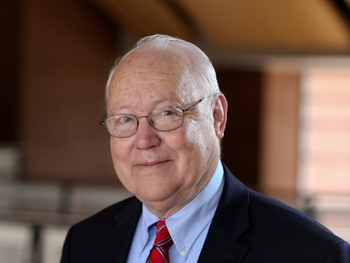Macroscopic Fundamental Diagram Approach to Traffic Flow with Autonomous/Connected Vehicles

Research Team
Robert Whalin, Jackson State University
Feng Wang, formerly at Jackson State University
Guojing Hu, Jackson State University
UTC Project Info
Technology Transfer Report
Project Brief – Improving Traffic Flow with Autonomous/Connected Vehicles: A Macroscopic Fundamental Diagram Approach
Final Report
Project Description
With the development of automation and connectivity technology, there will be more connected and autonomous vehicles (CAVs) entering the road network. Before all of the existing human-driven vehicles (HVs) are replaced by CAVs, there will be a long transition period where CAVs and HVs are mixed on the roadway. Equipped with vehicle-to-vehicle communication capability, CAVs are expected to improve the road capacity due to smaller reaction times and headways. However, in mixed traffic, the movement of human-driven vehicles are uncertain and unmanageable, which will severely hinder the communication between CAVs. Managing the operation of CAVs in mixed traffic is a struggle. To address this problem, the study proposed a lane-changing algorithm to guide CAV platoons to bypass the slower HVs. The simulation results verified that the proposed algorithm speeds up not only the CAVs but also the HVs, the total travel time decreased, and the highway outflow was improved. The study also found that as CAV penetration rates increased, the urban street capacity may increase or decrease depending upon the reaction time settings. This is important for traffic operators and vehicle industries to be aware of as CAVs become more common.
The advent of CAVs also has the potential to increase vehicle travel demand by improving road capacity and reducing travel and parking costs. However, the extent to which travel demand will increase is still uncertain. This uncertainty makes it challenging to determine how to modify existing road networks to improve travel flow/throughput. To circumvent this challenge, the study used a macroscopic fundamental diagram (MFD) method to identify design solutions that would improve the transportation network.
Products
- Methodology – Completed a research paper named “Macroscopic Fundamental Diagram Based Discrete Transportation Network Design”. The proposed methodology should be useful for city planners. When new roads need to be built to ease traffic congestion, the proposed method can be utilized to determine which links should be built.
- Algorithm – Completed a research paper named “A Cooperative Bypassing Algorithm for Connected and Autonomous Vehicles in the Mixed Traffic”. The proposed algorithm should be helpful to control the autonomous and connected vehicles in a mixed traffic environment. Potential users could be vehicle industry and state Department of Transportation.
- Methodology – Completed a research paper titled “An Analytical Approximation for the Corridor Macroscopic Fundamental Diagram of Mixed Human and Connected and Autonomous Traffic”. The research result is useful for the vehicle industry to determine the reaction time of autonomous vehicles, and for the Department of Transportation to determine the penetration rate of autonomous vehicles.
Who can benefit from the finding(s) of this project?
- State DOTS, city planners, and vehicle industries interested in connected and autonomous vehicles
Broader Impacts
- When product 1 is adopted, the road network design problem will have more robust solutions, even for uncertain travel demands, and the network throughput will be improved. The impact can be measured by network flow before and after implementing the proposed methodology.
- When product 2 is adopted, CAVs can be guided to move efficiently in the mixed traffic environment.
- When product 3 is adopted, vehicle industries will pay more attention to the reaction time settings of CAVs, especially when the current CAV penetration rate is low. The potential negative impact of CAV reaction time settings can be avoided.
Webinar
Webinar – Macroscopic Fundamental Diagram Approach to Traffic Flow with Autonomous/Connected Vehicles